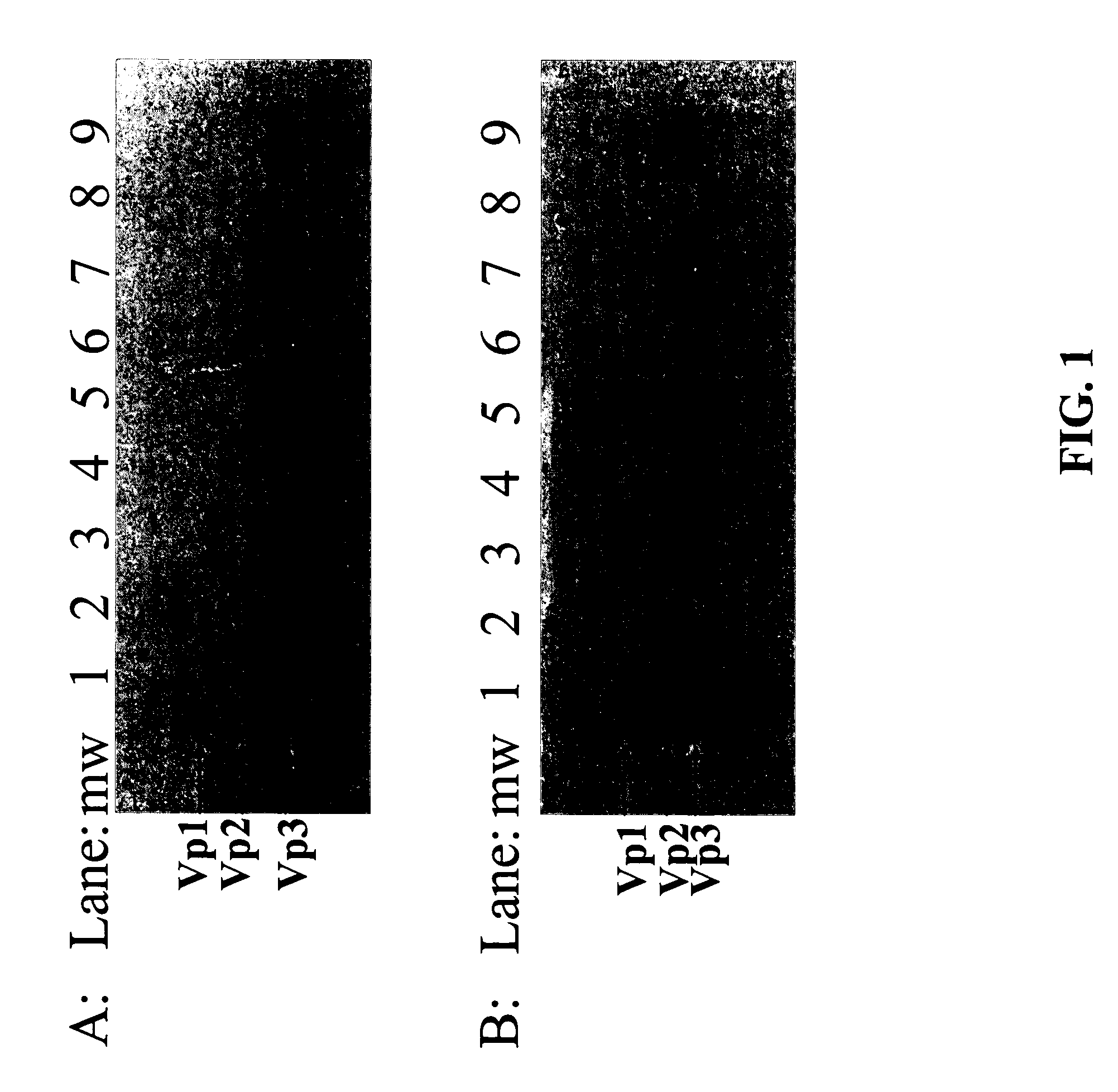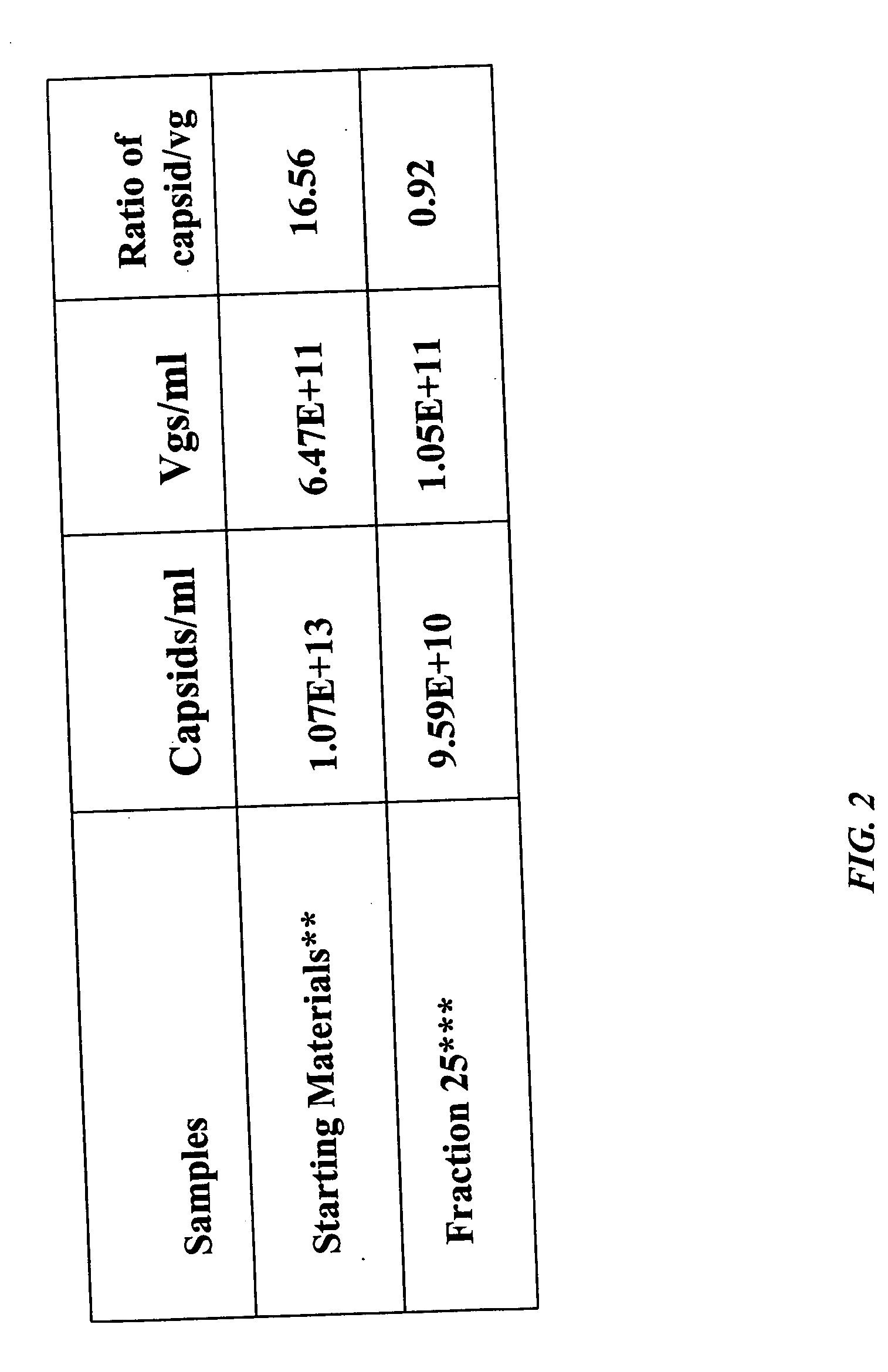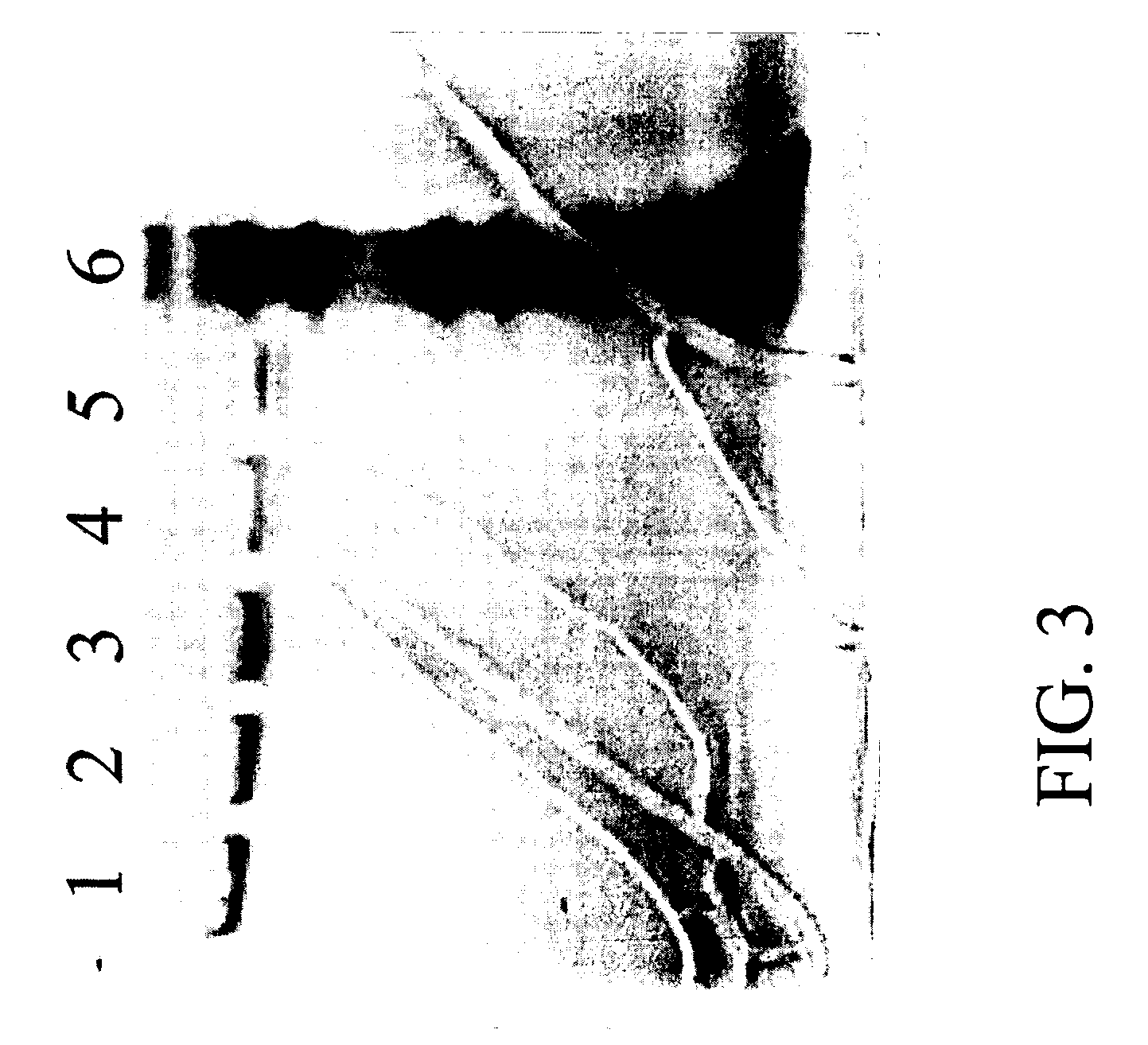Methods for producing preparations of recombinant AAV virions substantially free of empty capsids
a technology of aav and purification process, which is applied in the field of purification of adenoassociated virus (aav) virions, can solve the problems of commercially viable, a truly scaleable process to produce, and the preparation of purified virions using column chromatography contains a significant so as to achieve efficient and commercially viable methods, reduce the amount of empty capsids, and efficient and scalable
- Summary
- Abstract
- Description
- Claims
- Application Information
AI Technical Summary
Benefits of technology
Problems solved by technology
Method used
Image
Examples
example 1
Binding Properties of Empty Capsids and AAV Vector Particles with Packaged Genomes
[0148] To test if AAV vector particles bound to anion exchange columns, several resins were screened using a high-throughput manifold technique. The cell lysate of the 293 cell culture containing AAV vector particles and empty capsids was diluted using 20 mM sodium phosphate buffer to reduce the NaCl concentration to about 50 mM and loaded on each column. The columns were then washed and eluted following the procedure described above. The collected samples were subjected to Western Blot to detect the AAV particles distribution in the fractions. As shown in FIGS. 1A and 1B, the AAV capsid protein-specific monoclonal antibody detected proteins in high salt (1M NaCl) elution fractions only (FIG. 1, lane 3, 5, 7 and 9). This data clearly indicated the both AAV vector particles and empty capsids bound to all of the anionic exchange resins (both weak and strong exchangers) screened.
example 2
Charge Differences between Empty Capsids and AAV Vector Particles
[0149] AAV empty capsids and AAV vector particles were separated using CsCl gradient centrifugation. The empty capsids resulted in a visible band at a lower salt density (about 1.3 gm / cc) and the AAV vector particles distributed as a visible band at a higher salt density (1.38-1.41 gm / cc). The empty capsids and AAV vector particles were prepared as described above and loaded on columns separately. Three resins, Q SEPHAROSE, POROS 50HQ and UNOSPHERE Q, were used for column chromatography runs which were performed using the same programs to compare the elution profiles between empty and full particles. AAV empty capsids eluted at a lower salt concentration (eluted in earlier fractions) as compared with the AAV vector particles (eluted in later fractions); this phenomenon was observed for all three anionic resins tested. In the case of the UNOSPHERE Q resin, the empty capsids were eluted in fraction 10 in a salt gradient...
example 3
Effect of Resins and Salts on the Elution Efficiency and Resolution between Empty Capsids and AAV Vector Particles
[0150] The resins screened in this process were all anionic exchange resins, but did exhibit differences (charge density, bead size and composition, etc.). The efficiency in binding and separating empty capsids and AAV vector particles varied from resin to resin. The empty capsids eluted using 110 mM NaCl in the Q SEPHAROSE column. In contrast, approximately 65 mM NaCl was sufficient to elute the empty capsids using the UNOSPHERE column, and in the case of the POROS HQ column, approximately 130 mM NaCl was sufficient to elute the empty capsids.
[0151] Several different salts were also used to in the studies of elution profiles. Sodium chloride, sodium acetate, potassium acetate, ammonium acetate and sodium citrate were subjected to side-by-side comparisons. Using the same program to perform the column chromatography runs, empty capsid elution was delayed for several fra...
PUM
| Property | Measurement | Unit |
|---|---|---|
| concentration | aaaaa | aaaaa |
| temperatures | aaaaa | aaaaa |
| density | aaaaa | aaaaa |
Abstract
Description
Claims
Application Information
 Login to View More
Login to View More - R&D
- Intellectual Property
- Life Sciences
- Materials
- Tech Scout
- Unparalleled Data Quality
- Higher Quality Content
- 60% Fewer Hallucinations
Browse by: Latest US Patents, China's latest patents, Technical Efficacy Thesaurus, Application Domain, Technology Topic, Popular Technical Reports.
© 2025 PatSnap. All rights reserved.Legal|Privacy policy|Modern Slavery Act Transparency Statement|Sitemap|About US| Contact US: help@patsnap.com



